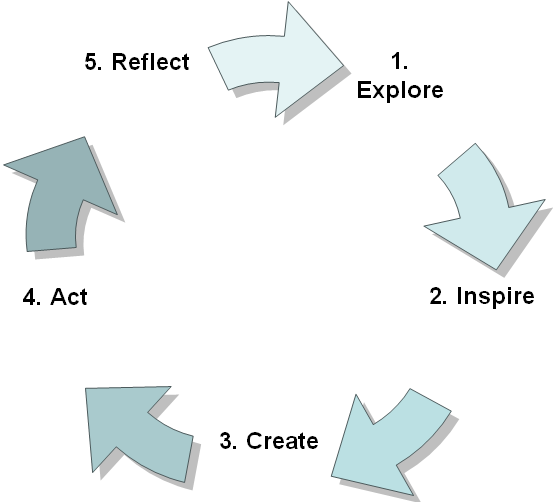A Coaching Model Created by Tracy Driscoll
(Executive Coach, CHINA)
 The Aspire Coaching Model has 5 steps which can play out in one session or over several sessions, depending on the needs of the client. The Aspire model is designed to provide the client with a mind-opening and life changing coaching experience, to allow transformation internally and externally. It is simple, holistic and intuitive. This model reflects me as a coach also, my way of thinking and my intention for coaching and will certainly help to attract the right kind of clients to me. It also makes me feel very secure and comfortable to have and use this model, which makes me a more confident and effective coach. Following is an explanation of how each step can work.
The Aspire Coaching Model has 5 steps which can play out in one session or over several sessions, depending on the needs of the client. The Aspire model is designed to provide the client with a mind-opening and life changing coaching experience, to allow transformation internally and externally. It is simple, holistic and intuitive. This model reflects me as a coach also, my way of thinking and my intention for coaching and will certainly help to attract the right kind of clients to me. It also makes me feel very secure and comfortable to have and use this model, which makes me a more confident and effective coach. Following is an explanation of how each step can work.
1. Explore
The first step is to explore the issue/s the client wants to discuss, to explore the background of the client, to explore any external or internal factors which affect where the client is at in his/her life today and in relation to the topic on which s/he wants to be coached. This may take part of the first session or the entire first session or even longer, depending on the situation and the needs of the client. This is an opportunity for the coach to ask all the questions necessary to build a clear picture of what has gone before, what is happening now and understanding the character and traits of the client. It is also an opportunity to clarify the focus for coaching. Through exploring the coach will also establish a relationship with the client.
2. Inspire
Once the situation is clarified and all the background is provided it is time for inspiration. The coach creates a space for inspiration by encouraging the client to seek new perspectives, by tapping into what excites the client and where they draw positive energy from in their lives (past and present), what they are passionate about, looking at new and old ideas, reframing, visualization, role models, interests and hobbies, exercises to open the mind, guided meditation and so on. Here the coach encourages the client to think differently, be open to unlimited possibilities, step out of their comfort zone and to expand their horizon dramatically. This can take part of one session or a whole session or more, depending on the needs of the client.
3. Create
Once the client is adequately inspired and/or bursting with excitement about new possibilities the coach will guide the client to categorise and prioritise their ideas, to create goals and a plan for moving forward. These could be small goals with a simple plan or really enormous goals with grand plans. Either way, this is the space for developing SMART goals and strategies for achieving them. It is also the space for considering all the factors which relate to the goals and plan – what support is required, what will change, what will remain the same, what is practical, realistic, how will the client remain on track, motivated, who can advise on strategy, is more research required, laying down timelines, small goals and big goals, planning celebrations along the way and when the goal is achieved and so on. Depending on the preference of the client (whether they are more left or right brain) they will be encouraged to create a plan either in writing or by creating something visual and introduced to powerful techniques for manifesting dreams and goals.
4. Act
Once the plan is in place it is time to act. Here the coach will support, encourage and guide the client toward achieving their goals. This could happen in one session or play out over several sessions, depending on the goal and timeline. The coach will be a sounding board, provide observations on progress and help to motivate the client to enjoy the process and their journey. New tools for overcoming blocks or fears etc, would be introduced here as and when needed.
5. Reflect
When goals are achieved it is important to take time to reflect on how they were achieved to see what works and take away lessons which can be applied in the future. It is also very important to celebrate. The coach will guide the client through this step to ensure the client gains the most possible from their experience of making their goals a reality. If the goal is not reached it is also important to reflect on why, what lessons were learned, what new directions have presented themselves, is a new plan necessary, where do we go from here? This could take one or more sessions depending on the needs of the client. Usually this reflection will lead back to step 1, exploring the new reality and what the client would like to do next. The client may complete the coaching here or decide to continue.